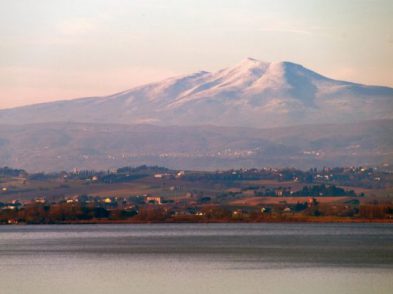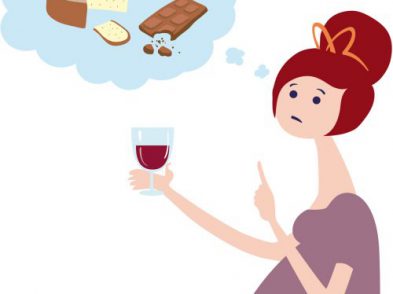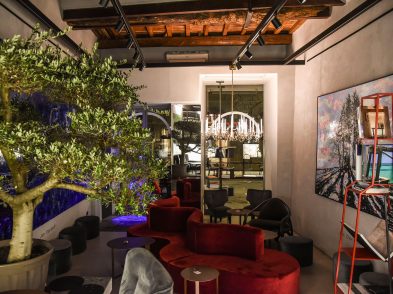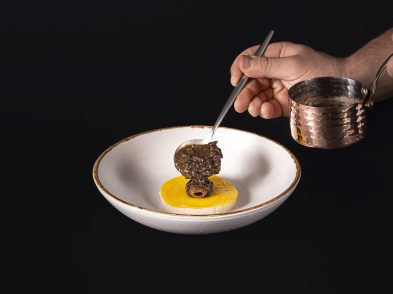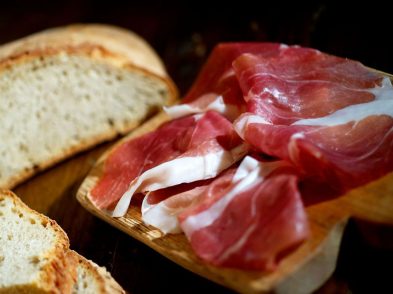Before starting any wine article I like to consult the books of Hugh. Hugh Johnson is the top god in the wine writing world. He is Zeus. I wondered what ‘Zeus’ wondered about rosé. In his memoir A Life Uncorked, Johnson states that he limits himself to one bottle—with two ‘one can never keep frivolous thoughts at bay’.
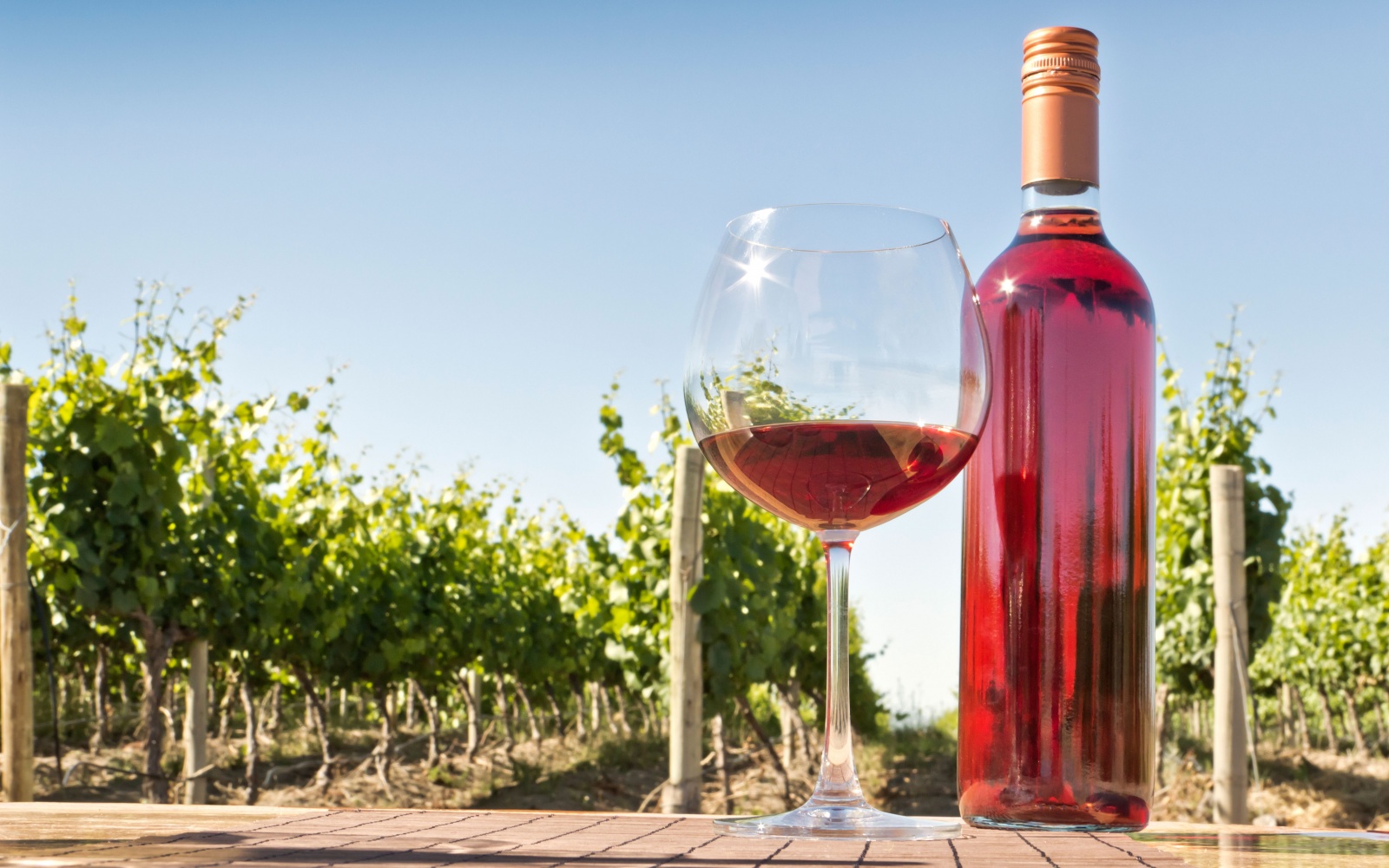
Rosé wines from Tuscany are perfect all year round.
Frivolous, what a fabulous word. For me it brings to mind elephants in tutus and Monty Python knights clip clopping on coconut shells. Frivolous equals inappropriately silly. In Italian it translates a shade more coolly: frivolo, a synonym of vacuo, futile and superficiale: are these the most appropriate words to sum up pink wines?
Last summer I noted with curiosity the lack of rosato being sipped at the Easy Living beach and alfresco in piazza Santo Spirito. Do Florentines deem it too frivolo? In the UK, rosé wines are a summer essential. As soon as the sun shines and it becomes warm enough to take off one’s scarf (yes, occasionally it does happen), pink wines appear on the table. At The River Café every year, we would sell out of our house rosé wines—those served by the glass—Montenidoli’s Canaiuolo Rosato, Capezzana’s Rosato di Carmignano ‘Vin Ruspo’ and Visintini’s Pinot Grigio Ramato. In Italy I rarely see a rosato offered by the glass, let alone by the bottle.
But in the wineries things are changing. Now, many of Tuscany’s top producers are making pink wines mainly from Sangiovese, the same grape variety behind the best reds of the region. Many of these rosé wines were made initially in small quantities to quench the thirst of the winemakers themselves. Both Sean O’Gallaghan at Riecine in Chianti Classico and Elisa Sesti in Montalcino tell me their pinks were made for the family. But then word spread to friends and colleagues about their quality and character, and suddenly they had to increase production.
Rosati are fine to drink on their own, but they have great food matching potential, too. They can be drank as an aperitivo. Chilled, they offer the same refreshment as a white but with nuances of the flavour of red wines, so next to a plate of prosciutto, of salty and fatty salumi, these crisp pinks stand up perfectly. Some of the more robust and deeper coloured rosé, such as the ‘Scuro’ from Val delle Corti in Radda in Chianti and ‘A Rose is a Rose’ from Sant’Agnese in Piombino, prove an excellent match for Greek salads and Middle Eastern dishes—try them with pulses, chickpeas, lentils and farro, as well as with vegetarian dishes involving aubergines and tomatoes. They also pair well with winter: the rosé from Beatrice Contini at Capezzana in Carmignano is structured and flavoursome. Plus alcohol levels never tend to go as high as the reds, which is another endearing factor.
There are pale ‘ramato’ copper-toned pinks that appear delicate, with subtle aromas and flavours, yet are tactile on the tongue. They unfurl a certain salinity that seems to lift up the taste buds like hairs on the back of the neck: a perfect companion for raw meat and fish. Winemaker Charlotte Horton at Castello di Potentino makes two styles of rosé wine: Sangiovese Rosato ‘Jaspidem’, deeply coloured, a substantial mouthful, ‘not a satellite of a red, but a wine in its own right…that can be drunk throughout the whole meal’. The other very pale (‘the colour of winter sunset’), ‘Lyncurio’ 2014 is made from 100% Pinot Noir grapes, a variety not cultivated widely in Tuscany as most of this region tends to be too warm for it, but Potentino’s vineyards on the Amiata enjoy a unique microclimate. The wine can be felt in every part of the mouth and there’s a flavour I cannot quite grasp. Horton suggests it’s warm hay, and suddenly I see Monet’s farmworkers sleeping in the afternoon sun, under the shade of a hay bale.
While the elephants in tutus may have pirouetted out of mind, two bottles have become a necessity.
How are rosé wines made?
Are rosé wines a blend of white and red wines? No, this practice is illegal for the production of pink wine everywhere, except in Champagne. So how to achieve the colour and why do there exist such tonal variations?
To make a white wine, the white grapes are crushed and the yeasts living on the outside of the skins get pushed into the juice, courtesy of the crushing. The skins are taken away immediately after crushing, but the yeasts are now in the juice and they can begin to eat the natural grape sugars and turn them into alcohol/wine.
To make a red wine the grapes are crushed, the skins are broken pushing the yeasts into juice, but then the skins are left in contact with the juice and gradually their colour leeches from their skins into the juice. From two to six weeks later the wine has become a bright purple/ruby colour.
The skins behave like hair dye. If they are left in contact with the juice for a short time, for a couple of hours or overnight, the wines have a pale, copper tone. If they are left for a little longer they take on deeper pink notes—the Val delle Corti wine for example spends six days on its skins. You might also detect a faint drying sensation, some tannin in these deeper-hued rosati, as they tend to have more body and weight in the mouth thanks to this longer skin contact.


